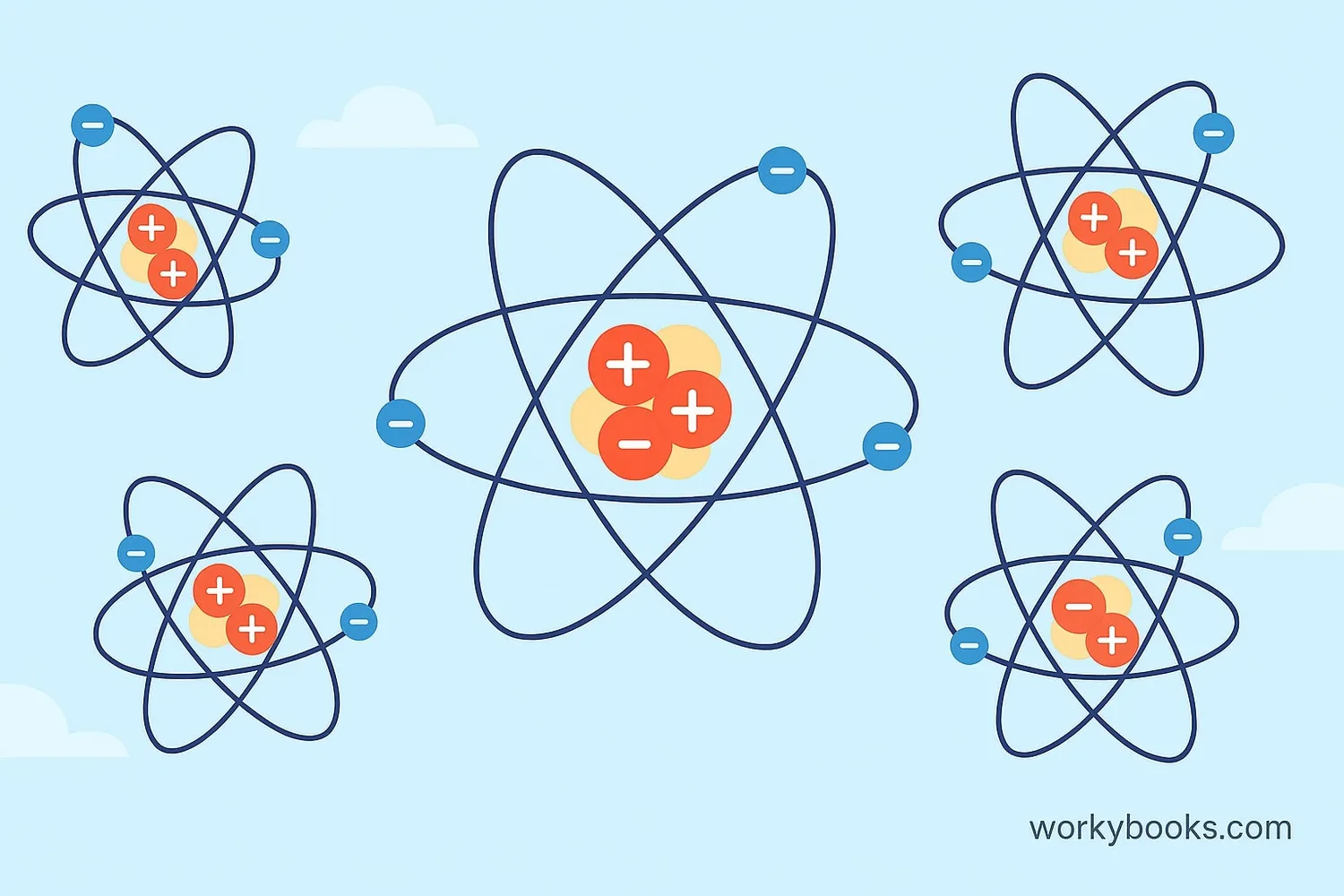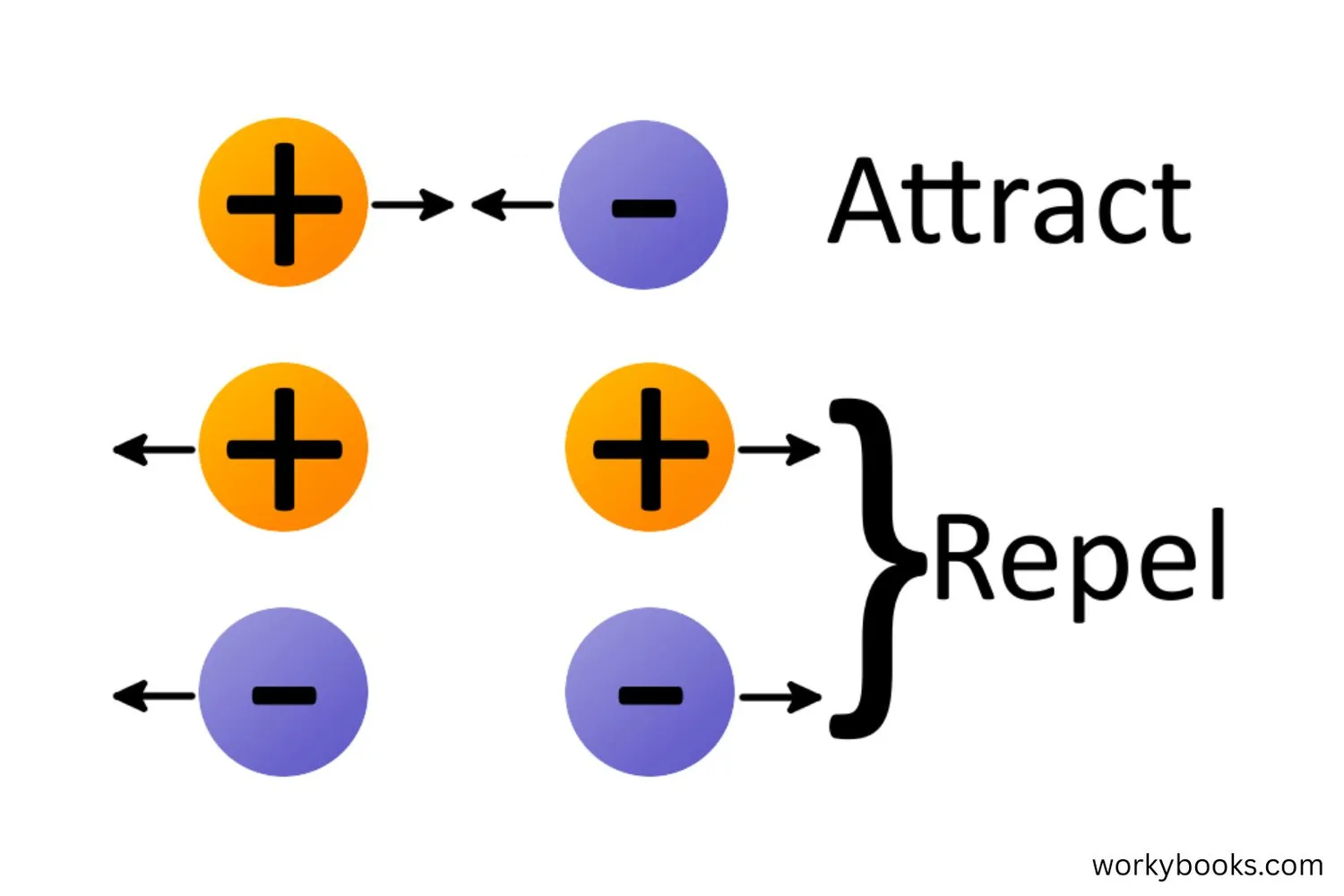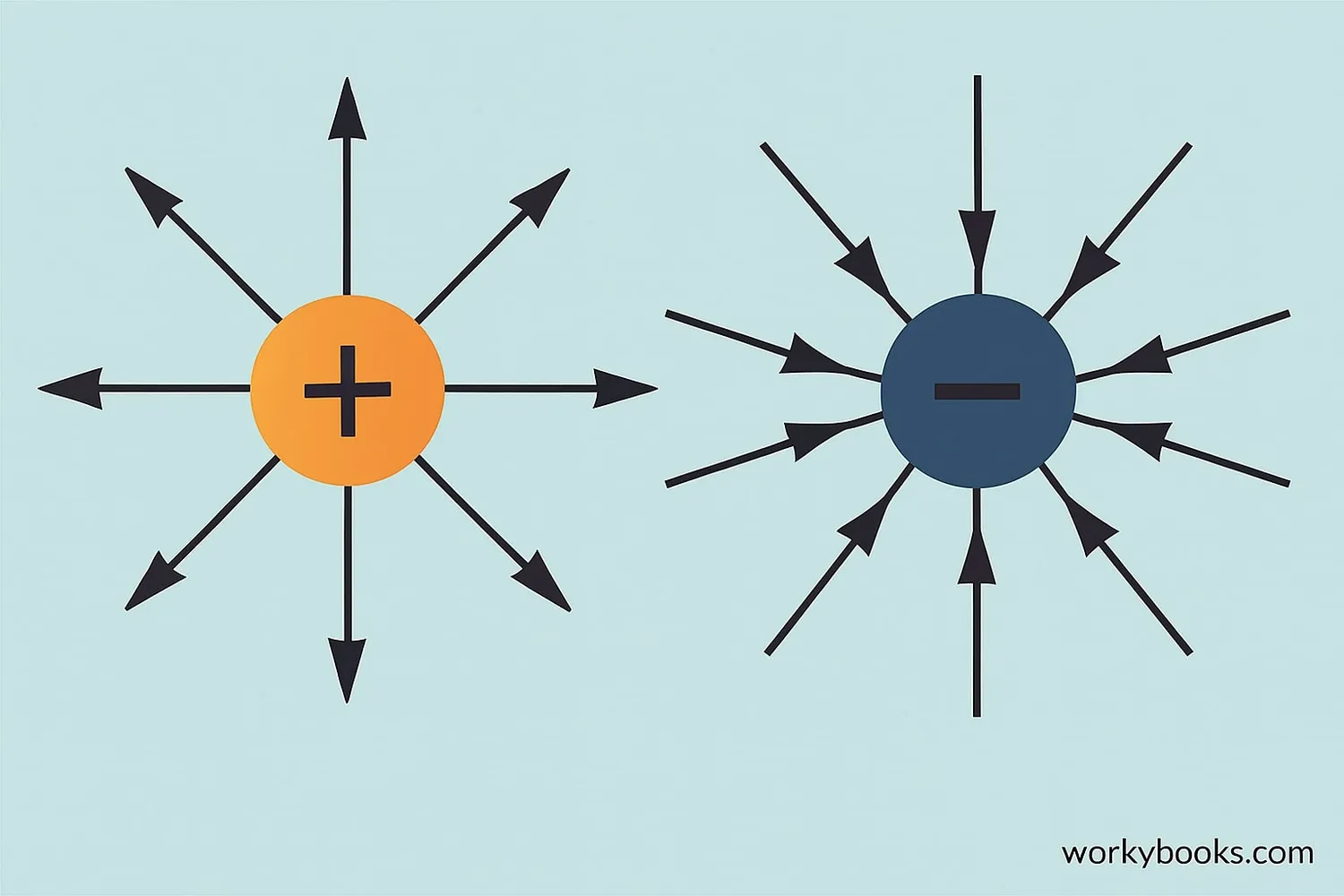Electric Charge - Definition, Examples, Quiz, FAQ, Trivia
Discover how invisible forces make objects attract or repel each other!
What is Electric Charge?

Electric charge is a fundamental property of matter that makes objects attract or repel each other. Everything around us is made of tiny particles called atoms, which contain even smaller particles: protons (positive charge), electrons (negative charge), and neutrons (no charge).
Think of electric charge like invisible stickers that can either stick together or push apart. When two objects have the same type of charge (both positive or both negative), they push away from each other. When they have different charges, they pull toward each other!
Charge Fact!
The smallest possible charge is called the elementary charge, which is the charge of a single proton or electron.
How Electric Charges Work

Electric charges follow simple rules that help explain how they interact with each other:
Positive Charge
+ + Repel
Opposite Charges
+ - Attract
Negative Charge
- - Repel
The unit we use to measure electric charge is the Coulomb (symbol: C). A single electron has a charge of about -0.00000000000000000016 Coulombs! That's why we usually talk about charges in terms of protons and electrons instead of Coulombs when dealing with atoms.
Charge Balance!
Most objects have equal numbers of protons and electrons, so they're electrically neutral. When an object gains extra electrons, it becomes negatively charged. When it loses electrons, it becomes positively charged!
Static Electricity

Static electricity is what happens when electric charges build up on the surface of an object. This often occurs when two different materials rub together and electrons transfer from one to the other.
Have you ever rubbed a balloon on your hair and then stuck it to a wall? That's static electricity in action! When you rub the balloon on your hair:
Rubbing
Electrons move from your hair to the balloon
Charging
Balloon becomes negatively charged
Attraction
Balloon attracts positive charges on the wall
Result
Balloon sticks to the wall!
Lightning is a giant example of static electricity! When clouds rub against each other, they build up huge electrical charges. When the charge becomes too big, it jumps through the air as lightning to balance itself out.
Electric Fields and Forces

Electric charges create invisible force fields around them called electric fields. These fields are the reason charges can affect each other without touching!
The strength of the electric force between two charged objects depends on:
Amount of Charge
More charge = stronger force
Distance
Closer objects = stronger force
Material Between
Some materials weaken the force
The electric force follows Coulomb's Law, which says the force between two charges is:
F = k × (q₁ × q₂)/r²
Where F is the force, q₁ and q₂ are the charges, r is the distance between them, and k is a constant.
Electric Charge Quiz
Test your electric charge knowledge with this quiz! Answer all 5 questions to see how much you've learned.
Frequently Asked Questions
Here are answers to some common questions about electric charge:
Fun Electric Charge Trivia
Discover some amazing facts about electric charge!
Lightning Power
A single lightning bolt carries about 5 billion joules of energy - enough to power a typical home for more than a month!
Electric Animals
Electric eels can generate up to 600 volts of electricity to stun prey! They have special cells called electrocytes that store charge like batteries.
Ancient Knowledge
People knew about static electricity as early as 600 BC! Ancient Greeks discovered that rubbing amber with fur would attract lightweight objects.
Space Charges
The Moon has electric charges on its surface! Dust particles can levitate due to electrostatic forces in the thin lunar atmosphere.


